#university of minnesota law library
Text




A mixed bag of letters and animals (featuring a couple of dragons!) from a beautiful 1525 book of Canon law. Someone please make these decorated initials into Bananagrams tiles.
#riesenfeld center#umn#university of minnesota law#university of minnesota law library#rare books#umn law#special collections#archives#law#canon law#dragons#initials#bananagrams
580 notes
·
View notes
Text
"Shall the Minnesota Constitution be amended to say that all persons shall be guaranteed equal rights under the laws of the state, and that the state shall not discriminate against any person on account of race, color, national origin, ancestry, disability, or sex, including pregnancy, pregnancy outcomes, reproductive freedom, gender identity, gender expression, and sexual orientation?"
Yes, of course, and this should have been done years ago.
Once this is done perhaps we can envision yet further advances and address questions around various other rights:
-The rights of mother earth: https://www.rightsofnaturetribunal.org/wp-content/uploads/2018/04/ENG-Universal-Declaration-of-the-Rights-of-Mother-Earth.pdf
-The right to free or low cost high quality education; the right to reason; the right to be provided accurate scientific information about all aspects of nature, life and the universe; the right to access all contents of a public library no matter one's age; the right to arts education; the right to human rights education; the right to extensive information about how to achieve and maintain all aspects of health, etc.
-A diverse basket of children's rights. Perhaps we could adopt whole cloth the Convention on the Rights of the Child:
https://www.ohchr.org/en/instruments-mechanisms/instruments/convention-rights-child
-The right to optimal health and access to free or low cost health care.
-The right to dark skies free of light pollution.
The reactionaries are still fighting against basic rights, which makes the fight for the further reaches of ennobling social conditions all the more difficult.
6 notes
·
View notes
Text
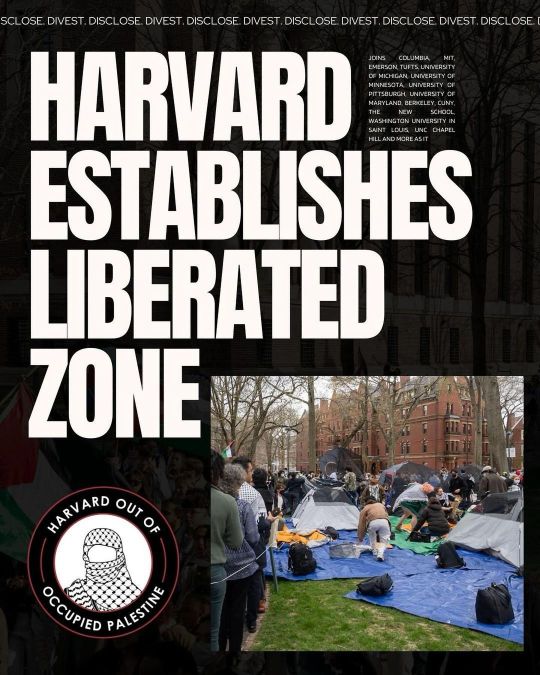
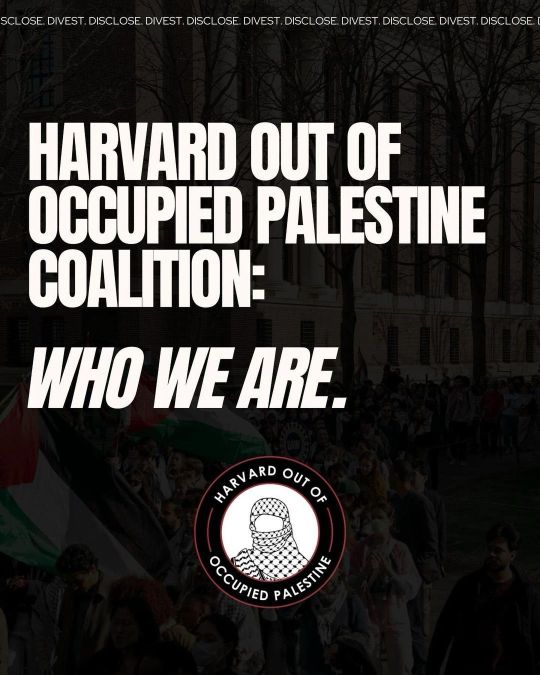



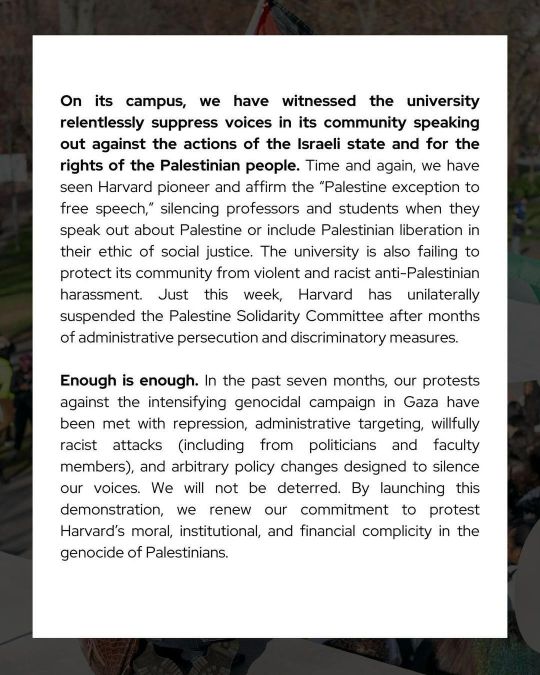

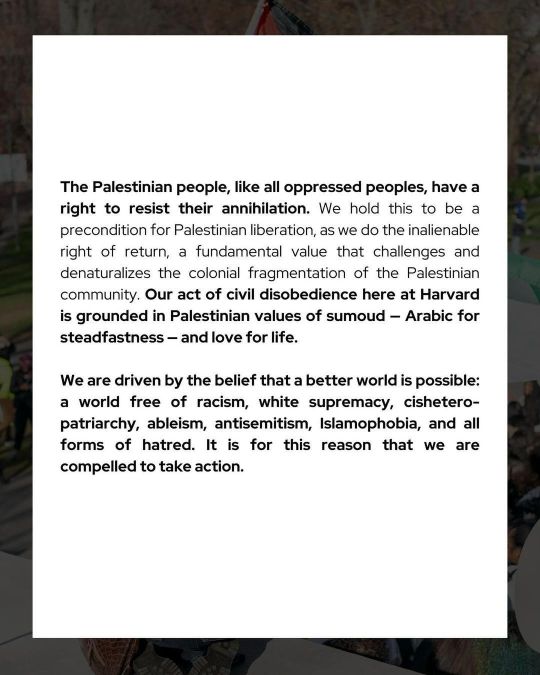
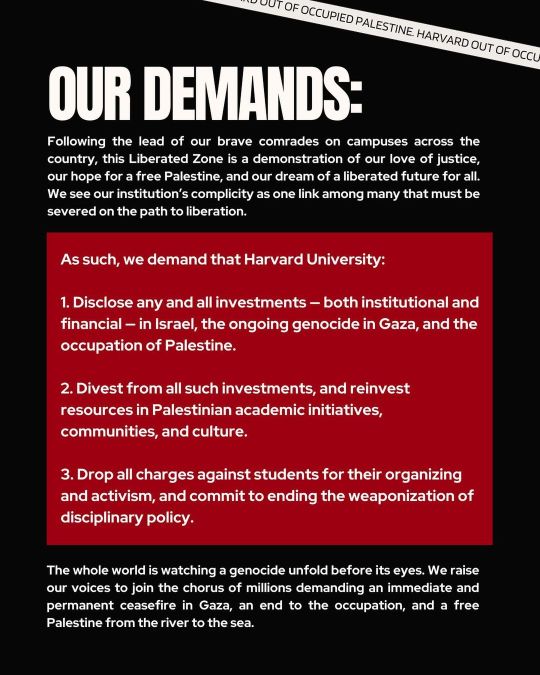
Uploaded on Instagram by harvxrdpsc on April 24, 2024.
------------------------------------------------------------------------------
[id: photo text
1st:
Harvard joins Columbia, MIT, Emerson, Tufts, University of Michigan, University of Minnesota, University of Pittsburgh, University of Maryland, Berkeley, Cuny, The New School, Washington University in Saint Louis, UNC Chapel Hill and more as it establishes Liberated Zone
The bold text makes it look like ‘HARVARD ESTABLISHES LIBERATED ZONE’
2nd:
Harvard Out of Occupied Palestine Coalition: Who We Are.
3rd:
We, the Harvard Out of Occupied Palestine Coalition, are a group of students and student workers at Harvard University committed to Palestinian liberation. We are part of a rich tradition of students who stood up to U.S. imperialism in Vietnam and Iraq, rallied against apartheid in South Africa, fought for Black liberation in the United Staes, and built national living wage campaigns on university campuses. We understand that all of our historic movements for freedom and justice are intertwined. The Palestinian cause if not for Palestinians alone – it is a cause for people of conscience, concerned with humanity, freedom, and justice.
We have established this Liberated Zone to call for an end to Harvard’s moral and material complicity in the ongoing genocide of the Palestinian people.
Over the past seven months, we have witnessed Israel and the United States unleash unimaginable cruelty in Gaza. As we write this, Israel has murdered more than 34,000 Palestinians, including 14,000 children. Every day brings more horrifying images than the last: families facing starvation, people undergoing amputation without anesthesia, newly discovered mass graves, entire neighborhoods reduced to rubble.
4th:
These atrocities are not new. Since the original Nakba – Arabic for catastrophe – of 1948, when 750,000 Palestinians were ethnically cleansed from their land, Palestinians have been dispossessed and fragmented by a pernicious apartheid regime, a brutal military occupation, and a suffocating blockade. Zionism, the political project rationalizing this violence, requires the subjugation of Palestinian life and the continued colonialization of Palestinian land. There can be no equivocation: Palestine is occupied from Gaza to the Galilee, from the Jordan River to the Mediterranean Sea.
This oppression is co-signed and co-sponsored by the United States government and its institutions. The U.S. continues to sustain the Zionist colonial regime with billions of dollars in military funding. Since its founding, Israel has been the largest cumulative recipient of U.S. foreign aid, receiving approximately $300 billion in economic and military assistance.
5th:
As we walk the halls of Harvard, study in its libraries, and sleep in its dormitories, we are acutely aware that there are no universities remaining in the Gaza Strip. Israel has robbed Palestinians of their rights to education by systematically destroying academic infrastructures and communities. Professors, teachers, students, and academic workers have been targeted and killed along with the rest of Gaza’s population. As students, educators, and graduate workers, we have a duty to fight against this genocide.
Palestine is not only a moral issue. It is an issue that affects our campus, one that fundamentally implicates Harvard University. As of 2019, Harvard had invested at least $200 million in companies with ties to illegal Israeli settlements, a flagrant violation of international human rights law, and at least $86,625 worth of investments in the Israeli military. Today, the Harvard Management Company, which oversees the world’s largest university endowment of $51 billion, discloses no information about the scale of natures of its investments in Israel.
6th
On its campus, we have witnessed the university relentlessly suppress voices in its community speaking out against the actions of the Israeli state and for the rights of the Palestinian people. Time and time again, we have seen Harvard pioneer and affirm the “Palestine exception to free speech,” silencing professors and students when they speak out about Palestine or include Palestinian liberation in their ethic of social justice. The university is also failing to protect its community from violent and racist anti-Palestinian harassment. Just this week, Harvard has unilaterally suspended the Palestine Solidarity Committee after months of administrative persecution and discriminatory measures.
Enough is enough. In the past seven months, our protests against the intensifying genocidal campaign in Gaza have been met with repression, administrative targeting, willfully racist attacks (including from politicians and faculty members), and arbitrary policy changes designed to silence our voices. We will not be deterred. By launching this demonstration, we renew our commitment to protest Harvard’s moral, institutional, and financial complicity in the genocide of Palestinians.
7th:
As student governments in schools across Harvard pass resolutions for divestment, the University must contend with the facts that its students will not tolerate its support for genocide, violence, and apartheid. In doing so, we proudly continue Harvard’s legacy of anti-war, anti-racist student organizing, from the mock “shanty towns” established in Harvard Yard in 1986 to protest apartheid in South Africa, to the 1969 University Hall occupation protesting against the war on Vietnam.
Our movement is one part of the tapestry of liberation movements. Harvard itself is a product of land theft and indigenous erasure: the initial funds to establish this university were used for the ‘education and conversion’ of indigenous people. By creating this Liberated Zone, we hope to begin the work of building the world we want to inhabit: a world free of the shackles of colonialism.
8th:
The Palestinian people, like all oppressed peoples, have a right to resist their annihilation. We hold this to be a precondition for Palestinian liberation, as we do the inalienable right of return, a fundamental value that challenges and denaturalizes the colonial fragmentation of the Palestinian community. Our act of civil disobedience here at Harvard is grounded in Palestinian values of sumoud – Arabic for steadfastness – and love for life.
We are driven by the belief that a better world is possible: a world free of racism, white supremacy, cishetero-patriarchy. Ableism, antisemitism, Islamophobia, and all forms of hatred. It is for this reason that we are compelled to take action.
9th:
Our demands: Following the lead of our brave comrades on campuses across the country, this Liberated Zone is a demonstration of our love of justice, our hope for a free Palestine, and our dream of a liberated future for all. We see our institution’s complicity as one link among many that must be severed on the path to liberation.
As such, we demand that Harvard University:
1. Disclose any and all investments – both institutional and financial – in Israel, the ongoing genocide in Gaza, and the occupation of Palestine.
2. Divest from all such investments, and reinvest resources in Palestinian academic initiatives, communities, and culture.
3. Drop all charges against students for their organizing and activism, and commit to ending the weaponization of disciplinary policy.
The whole world is watching a genocide unfold before its eyes. We raise our voices to join the chorus of millions demanding an immediate and permanent ceasefire in Gaza, an end to the occupation, and a free Palestine from the river to the sea. /id]
6 notes
·
View notes
Photo

Our Doctor Johnson
June 20, 1907
Dr. Johnson - (John A.) Doctor of Laws reads a speech to Frank Boswell Day, both dressed as founding fathers. Behind him, Minnesota Laws sit on the operating table.
The caption reads "We may never have a President John A., but we have a Doctor Johnson - that's something."
Governor Johnson had been granted a law degree from the University of Pennsylvania. He had previously denied plans to run for president. Frank Day was a private secretary to the governor.
See Also: John A. Johnson
From Hennepin County Library
Original available at: https://digitalcollections.hclib.org/digital/collection/Bart/id/5782/rec/175
#Charles Bartholomew#political cartoon#john johnson#Minnesota History#american history#1908 Presidential Election#Frank Boswell Day
0 notes
Photo
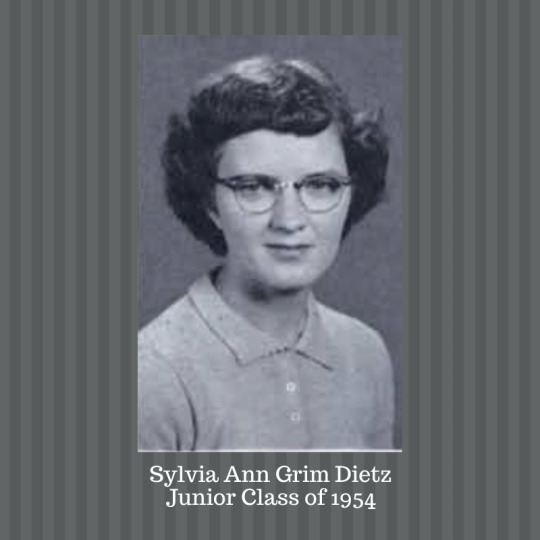
Sylvia Dietz was born in Janesville, Wisconsin in July 1931 to Ernest and Thelma Grim. Sylvia's brother, Lawrence Grim, a volunteer for the US Army, was killed in World War II and is buried in the Philippines. Sylvia had three sisters, Karen Biggerstaff, Doris Buehl and Betty Schumacher, all of whom predeceased her.
Sylvia graduated from Janesville High School in 1950. She attended colleges in Minnesota and South Carolina, graduating from Bob Jones University in Greenville, South Carolina, with a degree in Spanish and Bible Studies. Sylvia worked in Mexico teaching underprivileged children to read and write in Spanish.
After returning to the United States, Sylvia married Forrest Clair Dietz in 1957 at the People's Church with Pastor Boyer officiating. Sylvia and Clair had a son, born in 1958, Jeff Dietz of Atlanta, Georgia. A second son, Randall Dietz, of South Beloit, was born in 1961. Forrest Clair Dietz, also a US Army veteran of World War II, died in 2020. Sylvia worked as a substitute teacher, a school librarian, and a public librarian in Beloit, Wisconsin, and at the South Beloit, Illinois public library. In 1980 Sylvia began working as a United States postal clerk at the South Beloit Post Office. Sylvia retired from the Post Office in 1998. Sylvia and Clair volunteered at the Fair Oaks Nursing home for 33 years, performing music, giving inspirational stories, and sharing the Gospel of Jesus Christ. Sylvia played the clarinet as well as the piano and organ. Sylvia's husband was a member of the Fellowship of Christian Magicians for decades and Sylvia assisted him including becoming a Master Clown expertly applying makeup, crafting clown outfits as well as making animals out of balloons, a favorite of children watching the magic shows. Sylvia and Clair attended the People's Church and Faith Baptist Church in Beloit and finally attended Heritage Baptist Church in Roscoe, Ilinois for nearly forty years. Sylvia was a gentle soul who enjoyed crosswords and puzzles as well as traditional Christian and classical music. She also enjoyed mystery novels and classic British mystery television programs including David Suchet's Poirot, Jeremy Brett's Sherlock Holmes, John Thaw's Inspector Morse, Kevin Whatley's Inspector Lewis, and Endeavour.
Sylvia is survived by her two sons, Jeff and Randy; granddaughter, Jessica of Nashville, Tennessee; as well as her brother-in-law, Russell Biggerstaff; and many nieces and nephews including Kathy Morton, Mike Biggerstaff, Angela Werele and George Buehl, and Bob Buehl.
Funeral service will be at 11:00am with a visitation from 10:00am until the service on Thursday, December 29, 2022 in Heritage Baptist Church, 12848 Willowbrook Rd., Roscoe, IL. Burial in Floral Lawn Cemetery, South Beloit, IL.
#Bob Jones University#Archive#Obituary#BJU Hall of Fame#BJU Alumni Association#2022#Sylvia Ann Grim Dietz#Junior#Class fo 1954
0 notes
Text
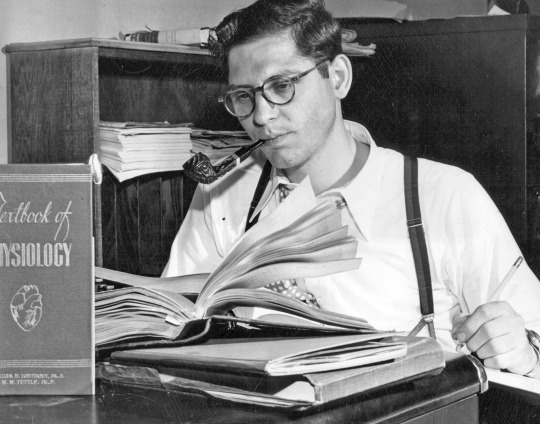
A survey of 101 American colleges and universities shows employers passing on students who only focus on work without spending time on extracurricular activities. University of Minnesota Law Freshman, Leon Witebsky, studies Physiology while smoking a pipe. He is demonstrating the 'all work, no play' attitude, which he says is out of character. Source: Hennepin County Library
0 notes
Text



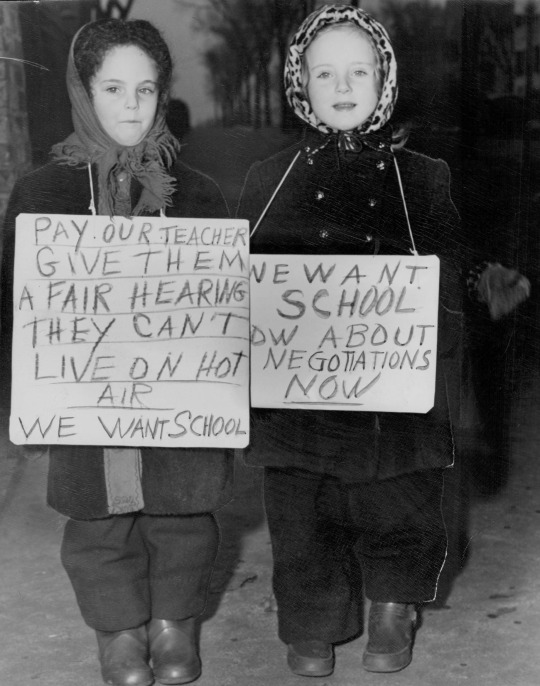
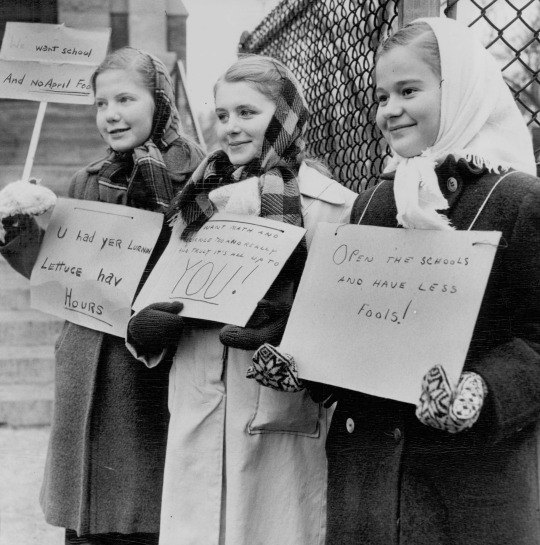
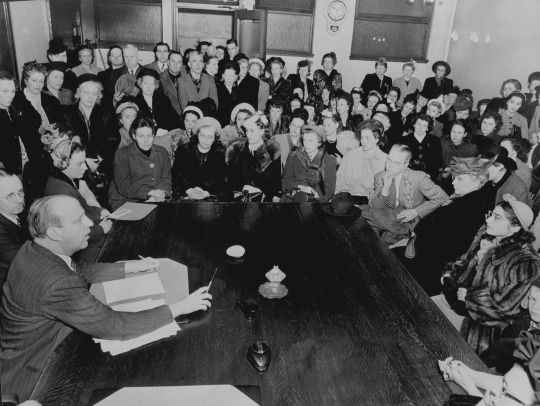
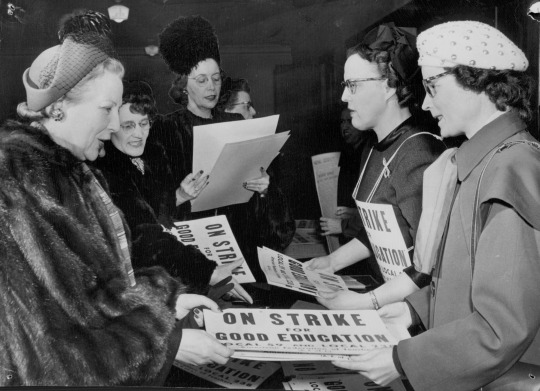
On Strike for Good Education
On February 24, 1948, Minneapolis school teachers abandoned their classrooms for the picket lines. The strike was the result of the school board deciding to cut four weeks from the school year in order to stay within budget and prevent a $2,000,000 deficit. Both union and non-union teachers rejected the shortened school year and union teachers filed new salary demands calling for an increase in the minimum pay base from $2,000 to $3,000 and an increase from $4,000 to $6,000 for salary maximums. During the strike, 92 public schools closed and 65,000 students were out of school. During the strike, many students joined in support of the teachers, carrying signs that said “Pay our teacher. Give them a fair hearing. They can’t live on hot air. We want school” and “U had yer lurnin lettuce hav hours”. The strike lasted 27 days. Students and teachers returned to the classrooms on March 22, 1948, after teachers approved a $300 pay increase for the remainder of the year and automatic increase of $200 annually.
This year, on February 23, 2022, after many months of negotiations, teachers unions in Minneapolis and St. Paul both filed intents to strike, bargaining for, among other things, more mental health professionals for students, smaller class sizes, higher wages for teachers and protections to help retain teachers of color. A strike could begin as soon as March 8. The Minneapolis Federation of Teachers last went on strike in 1970. You can read about the 1970 strike in Dr. Bill Green’s forthcoming book Strike! Twenty Days in 1970 When Minneapolis Teachers Broke the Law (University of Minnesota Press, June 2022).
Photos of the 1948 Teachers’ Strike from the Minneapolis Newspaper Photograph Collection in the Hennepin County Library Digital Collections. See more online.
#Minneapolis#Minnesota#strikes#teachers#labor strikes#unions#teachers union#Minneapolis Federation of Teachers#school#1940s#education#Minneapolis history
154 notes
·
View notes
Photo
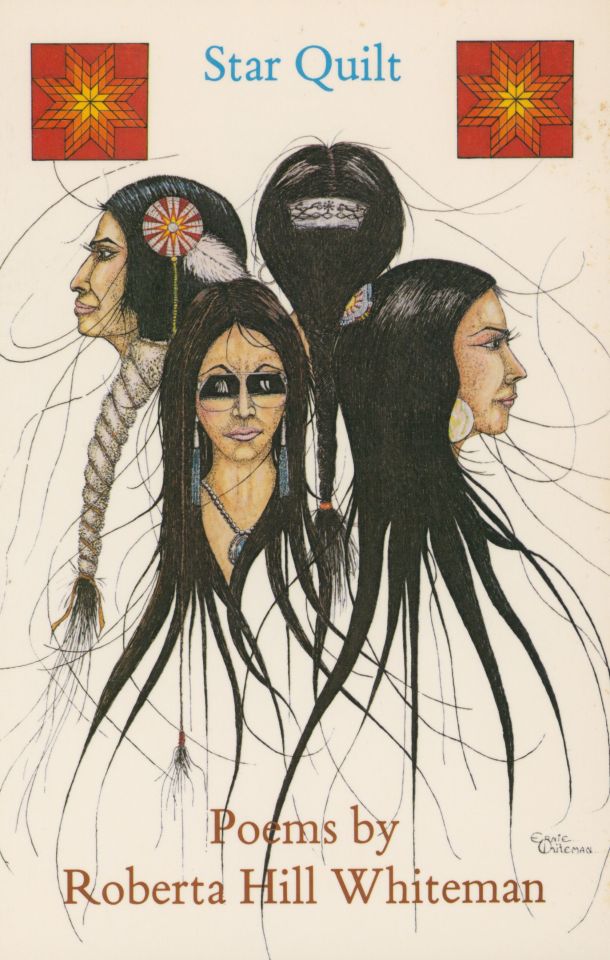
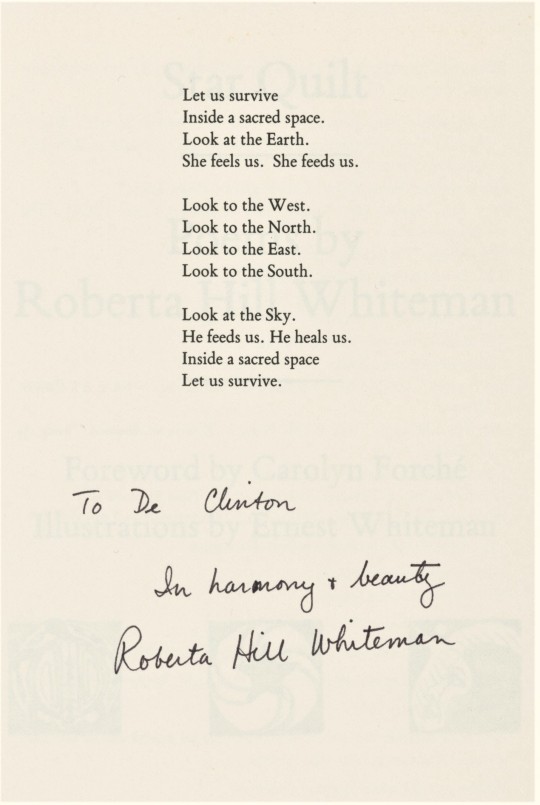
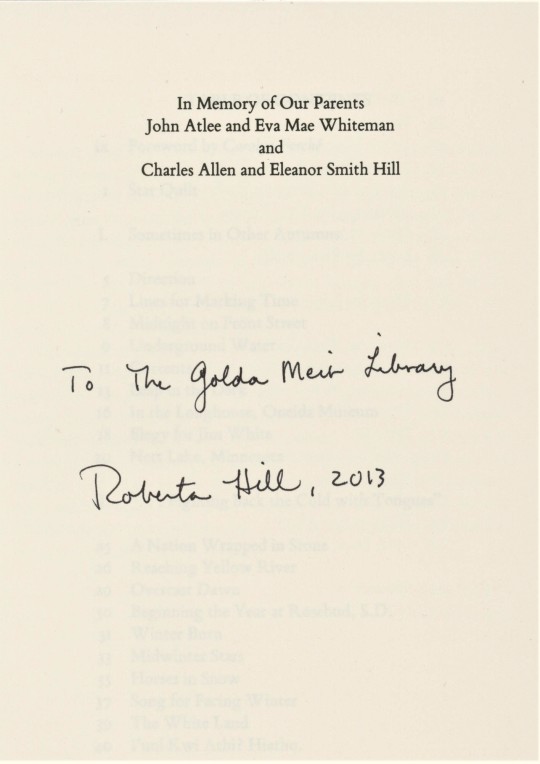

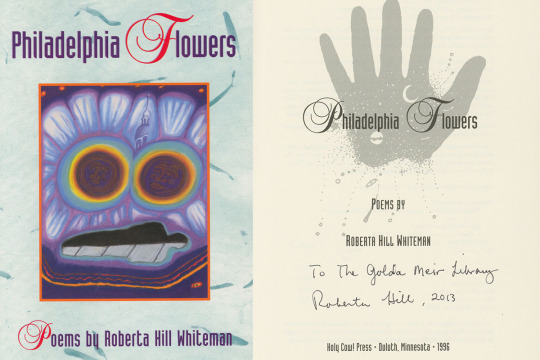
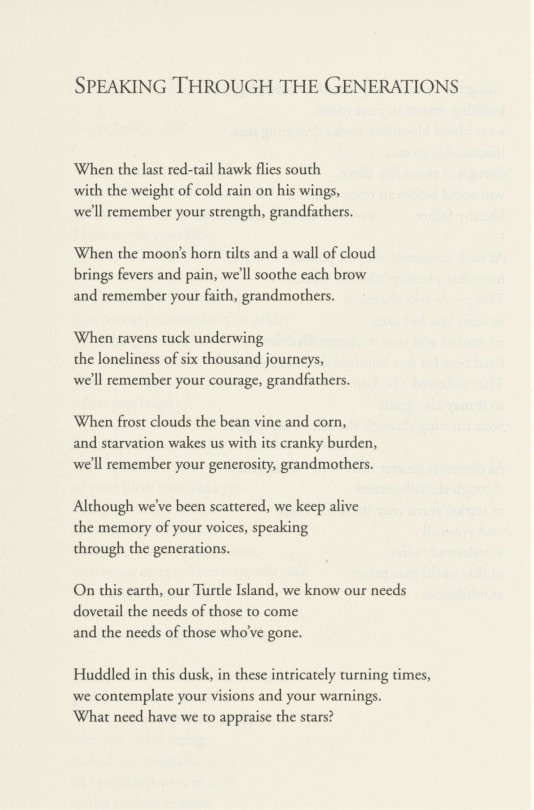

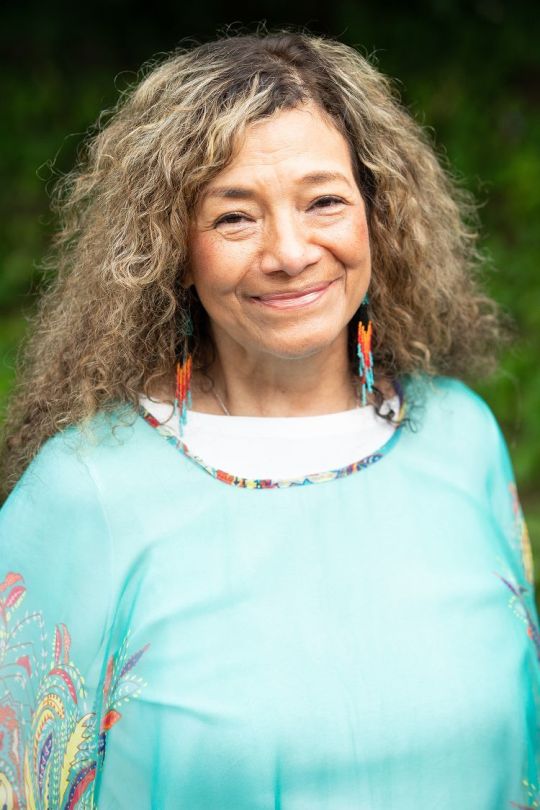
Native American/First Nations Woman Writer of the Week
ROBERTA HILL
This week, we introduce you all to Roberta Jean Hill, formerly Roberta Hill Whiteman, a poet and educator native to Wisconsin! Born in 1947 near Green Bay, Roberta Hill grew up among the Oneida Indigenous peoples of Wisconsin, a rich heritage that enlightens her work as a poet and has driven her scholastic career. In her third poetry collection, Cicadas: New & Selected Poems, published by the Holy Cow! Press in 2013, Hill writes:
To the people, beings and places I love, named or unnamed, met and imagined. May they continue to inspire us to live and keep loving earth and her beings for all eternity.
UW-Milwaukee Special Collections preserves four signed presentation copies of Hill’s poetry books, all published by Jim Pearlman, founder and editor of Holy Cow! Press in Duluth, Minnesota, which is dedicated to publishing writers who live in the American Midwest and focuses on publishing Native American authors and thematic anthologies.
UWM Special Collections holds two copies of Hill’s first collection of poetry, Star Quilt, originally published in 1984 with foreword by poet, editor, professor, translator, and human rights advocate, Carolyn Forché. One is a first printing from 1984, signed in 2013 to our library, while the other is a second printing, illustrated and republished by the Holy Cow! Press in 1985, which is signed to Milwaukee poet and educator DeWitt Clinton.
The illustrations for both printings of Star Quilt were done by Hill’s husband, artist, director of First Nations Film and Video Festival, Inc, and member of the Northern Arapaho tribe, Ernest Whiteman. The cover art for the book is a portrait of a woman facing four ways, hinting at Roberta’s use of the four cardinal directions throughout the book that portray the separation and displacement that the Oneida peoples have experienced in a long history of forced migration by the U.S. government. Throughout the collection, Hill internalizes this feeling of loss and separation, utilizing an extended metaphor of dust in the winds returning to the Earth, from where the peoples are said to have come. The poem above, “I’uni Kwi Athi? Hiatho,” uses Hill’s father’s name, the meaning of which Hill says he never revealed.
In the glossary for Star Quilt, Hill tells the history of quilt making by Plains Indian women, which are designed with a central star for their children and grandchildren, stating, “it is a valuable possession, connecting the generations to one another and the earth.” Hill dedicates this collection to those who inspired her writing, “In Memory of Our Parents John Atlee and Eva Mae Whiteman and Charles Allen and Eleanor Smith Hill”.
Roberta Hill’s second collection, Philadelphia Flowers: Poems, published in 1996, carries many individual poems to and for family and friends, dedicating the collection to her three children, Jacob, Heather, and Melissa. The cover painting and illustrations for Philadelphia Flowers are again by Ernest Whiteman. Hill’s final and most recent collection, published in 2013, Cicadas: New & Selected Poems, reprints poems selected from Star Quilt and Philadelphia Flowers and acts as a follow-up to her recent life experiences; including a longer individual poem dedicated to Hill’s late brother-in-law, “Ernie” Whiteman.
Also held by our department is a fine press printing of an excerpt of Roberta Hill’s poem, Your Fierce Resistance, published in 1993 by the Minnesota Center For Book Arts in conjunction with The Loft’s Inroads: Writers of Color series. Be on the lookout for more on this beautiful production coming later!
After graduating with a BA from the University of Wisconsin-Green Bay, Hill earned an MA in fine arts from the University of Montana, and completed her PhD in American Indian Studies at the University of Minnesota. Hill’s doctoral thesis honors the work of her paternal grandmother, Dr. Lillie Rosa Minoka-Hill, through a biographical study of her life as the second American Indian woman to earn an M.D.in the U.S. Roberta Hill has held several academic positions and is Professor Emerita of English and American Indian Studies at the University of Wisconsin-Madison.
See other writers we have featured in Native American/First Nations Woman Writer of the Week.
–Isabelle, Special Collections Undergraduate Writing Intern
We acknowledge that in Milwaukee we live and work on traditional Potawatomi, Ho-Chunk, and Menominee homelands along the southwest shores of Michigami, part of North America’s largest system of freshwater lakes, where the Milwaukee, Menominee, and Kinnickinnic rivers meet and the people of Wisconsin’s sovereign Anishinaabe, Ho-Chunk, Menominee, Oneida, and Mohican nations remain present.
Author Portrait from the Library of Congress
#Native American/First Nations Woman Writer of the Week#National Poetry Month#Native American Poets#indigenous writers#Roberta Hill#Roberta Jean Hill#Roberta Hill Whiteman#Star Quilt#Philedelphia Flowers: Poems#Cicadas: New and Selected Poems#Ernest Whiteman#Jim Pearlman#Holy Cow! Press#Wisconsin#Carolyn Forche#Oneida#Arapaho#Quilt Making#Your Fierce Resistance#Poetry Books#Minnesota Center for Book Arts#UW Madison#UW Green Bay#The Loft#Inroads#Writers of Color Series#Isabelle
69 notes
·
View notes
Photo
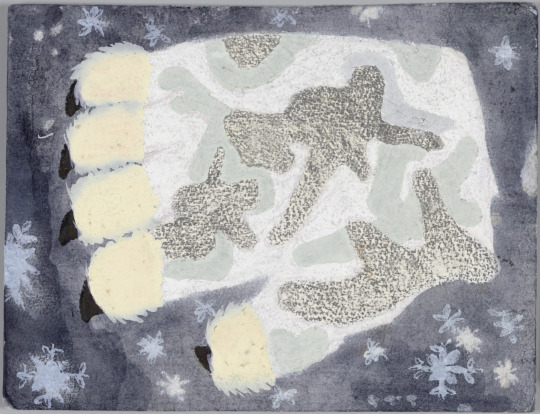

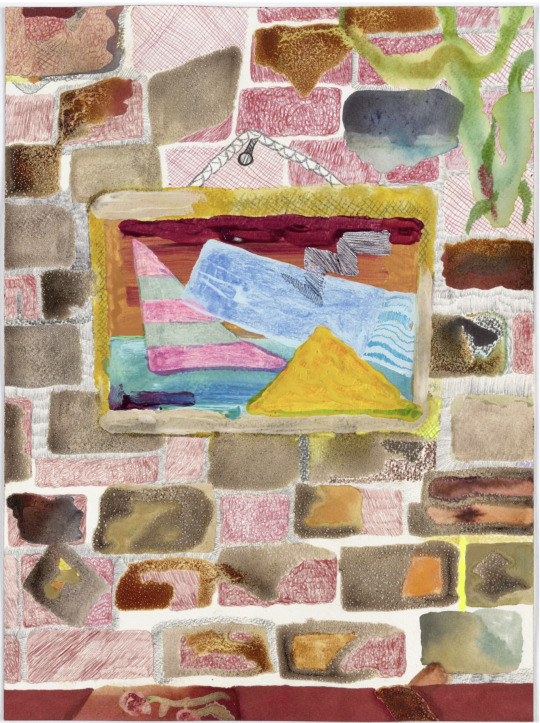
Tyson Reeder
Bio:
Born: 1974,
Hometown : Fairfax, VA
Lives and Works: Chicago, IL
Education: B.A. Montana State University, Bozeman, MontanaBFA, University of Minnesota, Minneapolis, MinnesotaArt Center College of Design, Pasadena, CASkowhegan School of Painting and Sculpture, Skowhegan, Maine
Chicago-based artist and curator Tyson Reeder works in a multitude of mediums, from more traditional painting and video to elaborate site-specific installations, performative spaces and interactive collaborations. His dramatically colorful paintings, which he frequently creates “en plein air,” feature landscapes, everyday objects and clashing pastel patterns, sometimes incorporating pop culture and hip hop references. At once eclectic and irreverent, Reeder’s work mines the depths of art history and contemporary experience, bringing parody to Fauvist inspired formalism.
Reeder has shown in solo exhibitions at CANADA, New York, Daniel Reich, New York, The Green Gallery, Milwaukee, Office Baroque, Brussels, Belgium, Jack Hanley Gallery, Los Angeles and Gavin Brown’s Enterprise, New York. His group exhibitions include Shane Campbell, Chicago, Museum of Modern Art Library, New York, Foxy Production, New York and David Zwirner, New York.
In addition to his individual practice, Reeder has also become known for his curatorial projects with his sister-in-law Elysia Borowy-Reeder and brother Scott Reeder—thier storefront Milwaukee gallery General Store curated the now-infamous “Drunk vs. Stoned” group exhibitions at Gavin Brown’s Enterprise. The trio’s most recent project is entitled Club Nutz: a pop up performance space that welcomes comedy, art, music, lectures, and absurdity. Since its inception adjacent to Green Gallery in Milwaukee, the Reeders have taken Club Nutz to Frieze Art Fair in London, The Museum of Contemporary Art in Chicago and Salon 94 in New York, among others.
Questions:
1.) How does this artist’s artwork compare to past abstract artwork?
2.) How does this artwork relate to ruptured space artwork discussed in class?
-Emma Ruark
2 notes
·
View notes
Photo
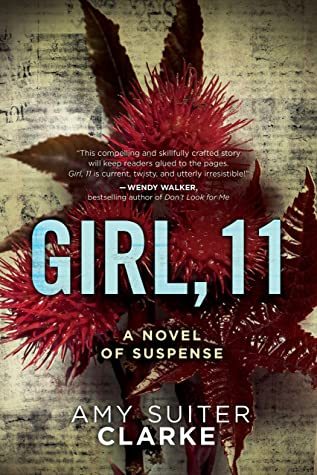
REVIEW
Girl, 11 by Amy Suiter Clarke
Alternating between podcast transcripts and real time events this story immersed me in the life of Elle and the cold case she was presenting to her listeners. It drew me in, held my interest, and was utterly compelling. Dark and gritty and real…and so much more.
What I liked:
* Elle: complicated and complex with a backstory that impacted her in many ways. I found her intriguing. She was dedicated, focused, loving and smart…a woman I could see having as a friend.
* Martin: Elle’s husband, medical examiner, loving, kind, intelligent, anchor and support for his wife. A good man and great partner for Elle.
* Sash: Elle’s friend, single mother of Natalie, lawyer.
* Natalie: smart, strong, wise, young, great potential for the future.
* The setting, plot, pacing and way the story was written.
* Wondering if I should look for some podcasts to listen to…and where to find them.
* The police procedural aspect of the story
* Some of the people that were supporting characters: Ayaan, Sam, Tina
* Reading the backstory of the serial killer
* The podcast information and how it all tied into what was happening in the present
* The way math played into the killings
* Finding out who the TCK killer was and the confrontation scene
* Getting to read a debut author that I believe has a brilliant future
* Wondering what book will be next by this author and whether or not this will be the first in a series or a standalone book/story.
What I didn’t like:
* The TCK killer
* Knowing that such evil people exist in real life
Did I enjoy this book? Yes
Would I read more by this author? Definitely
Thank you to NetGalley and Houghton Mifflin Harcourt for the ARC – This is my honest review.
4-5 Stars

BLURB
Once a social worker specializing in kids who were the victims of violent crime, Elle Castillo is now the host of a popular true crime podcast that tackles cold cases of missing children in her hometown of the Twin Cities. After two seasons of successfully solving cases, Elle decides to tackle her white whale—The Countdown Killer. Twenty years ago, TCK abruptly stopped after establishing a pattern of taking and ritualistically murdering three girls over seven days, each a year younger than the last. No one’s ever known why—why he stopped with his eleventh victim, a girl of eleven years old, or why he followed the ritual at all.
When a listener phones in with a tip, Elle sets out to interview him, only to discover his dead body. And within days, a child is abducted following the original TCK MO. Unlike the experts in the media and law enforcement who have always spun theories of a guilty suicide, Elle never believed TCK had died, and her investigation was meant to lay that suspicion to rest. But instead, her podcast seems to be kicking up new victims.

AUTHOR BIO
About Amy Suiter Clarke
Amy Suiter Clarke is a writer and communications specialist. Originally from a small town in Minnesota, she completed an undergraduate in theater in the Twin Cities. She then moved to London and earned an MFA in Creative Writing with Publishing at Kingston University. She currently works for a university library in Melbourne, Australia.
Girl, 11 is her debut novel published by Houghton Mifflin Harcourt in the USA, Text Publishing in Australia, and other publishing houses all over the world.
Amy’s short stories and feature articles have appeared in Ad Hoc Fiction, The Ram Boutique Vol. 1, the online literary magazine Storgy, Eureka Street Magazine, and two Kingston University Press magazines. She has written articles, marketing copy, and corporate communications for a variety of companies in the legal, information technology, accounting, advertising, and bridal industries.
She is represented by Sharon Pelletier of Dystel, Goderich & Bourret LLC.
Website: https://asuiterclarke.com/
Facebook: https://www.facebook.com/amysuiterclarke/
Instagram: https://www.facebook.com/amysuiterclarke/
Twitter: @asuiterclarke
#Amy Suiter Clarke#houghton mifflin harcourt#NetGalley#Fiction#Thriller#Mystery#Murder#Who Done It#Podcast#Survivor#Crime#Police Procedural#Debut Novel
1 note
·
View note
Text
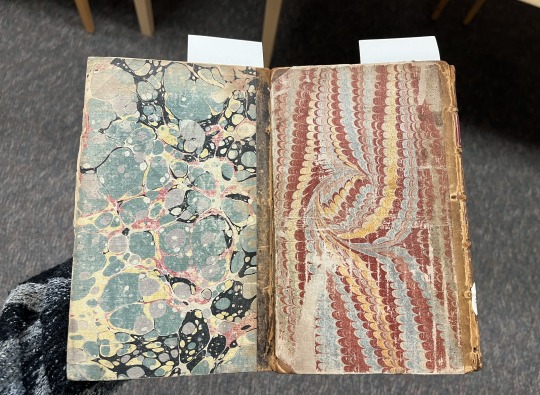

Some unexpected marbling on two books (here and here) covering the trial of Lord Sackville, 1760.
#riesenfeld center#umn#university of minnesota law#university of minnesota law library#umn law#rare books#archives#special collections#law school#old books#marbling#beautiful book covers
192 notes
·
View notes
Text
Only Time Will Tell- Brock Boeser 1.3
about/request: I really wanted to explore a relationship where you are ‘the other woman’ this is the result of that. I’m not sure how long this will end up so…. sorry.
warnings: cursing, i think that's it??
authors note: Sorry I took such a long time bringing this out, I didn’t know if anyone actually liked this or not. Remember that a lot of details in this story are made up or changed. Make sure to check out parts one and two, I fixed some mistakes and made some corrections.
timeline: march 2017
word count: 2614

Hockey used to be a life for not just me, but my whole family. Three nights a week we would hop in my dad’s old work truck to cruise over to wherever Charlie, and in turn Brock, played. Often times we would meet up with the Boeser’s to grab the best seats right by the ice. Here my mom would yell to “Shoot the puck!” or boo at whatever call she felt didn't fit the crime. My dad would grab a couple of beers while talking to some guys he knew from his work. Small towns mean most people there he knew so he would rarely sit with us the whole game. Sometimes I would sit by my mom and Brock’s mom and sisters. Sometimes there would be kids from school or members from the team who were scratched I would sit by instead. Wren was often the one scratched. He never made it to practice on time and when he did he would spend more time talking to guys on the team then practicing. He was nice and seen grew to be one of the guys on the team I felt fully comfortable with. He understood what it was like to be the younger sibling and live in the shadow of our elders. His older brother Josh was team captain and lead them to 3 state titles in a row.
After the game, all of us would go out to eat. The Boeser’s and the Y/L/N’s and whomever joined along from the team. Dad would tell Charlie what to do better, of course Dad knew what it was like to play hockey. He played for the University of Minnesota until a really bad accident his sophomore year took him out. Charlie, and me too (at least for a little bit), just wanted to impress him. Often times dad would rag on Charlie until they got into a mini fight. Charlie would hitch a ride back with Brock and his family. My dad would then spend the whole drive home complaining that Charlie was never going to be as good as him if Charlie didn't take his advice.
Although the bad seeped into the good. The hockey rink was were my family was one. We all would come together to scream when number 6 would skate out. Cause no matter how awful things were going at home, the rink was a time of escape. It was when hot chocolate would warm cold fingers in the late second period or the high of sugar rush from skittles in the second intermission. It was a time to giggle at the little kids they brought out between periods. They wouldn’t yet be comfortable on skates so they would slip and fall or miss the puck completely. I couldn’t remember what it was like when Charlie and I were that young playing, but I like thinking we were better than that.
After he had died, I didn’t go to many games. There was no more hot chocolate or skittles high. No little kids falling or scoring on their own net. We never went out to eat after the games. There were no more arguments between dad and Charlie. The nearby rink which once held the best memories was purposely avoided at all times. Life went on, but each day seemed to hold some emotional punch of remembrance. Like one day, about 3 months after he died I came home from school and my mom had cleaned out his room. Neat piles of his clothes and pictures were placed in bins labeled “attic” or “giveaway.” His first skates, his autographed Detroit Red Wings Steve Yzerman jersey, and so much more was packed away to be set aside. His posters, CDs and other trinkets were thrown out or donated to a thrift store. I remember yelling at my mom that this is his room. She told me she needed to heal and that dad had been asking her to do it for two weeks. It was time to move on.
Since moving I had gone to no hockey games. And the Vancouver Canucks were not a bad team. They had just been having a difficult time in recent years. That didn’t make city pride for them any less. Any game night and the always crowded downtown streets turned into an obstacle only the bravest could handle. I never purposely put myself in a position to make the drive down to the stadium in the past 2 years of living in Vancouver. Occasionally I was invited to games by friends and classmates. I managed to get out of it every time too, but somehow escaping this invite seemed impossible.
It was Brock’s mother’s last night in the city before she had to fly back down to Minnesota to care for Brock’s younger siblings. I was extended an invite due to my ‘gracious’ hosting, my mother called me and told me how Laurie, Brock’s mother, raved how I grew into such a beautiful and caring young woman. So there I was crammed in Rogers Arena with 18,000 or so people. Laurie was on one side of me wearing a new Boeser jersey. I, even though I lived there awhile, owned no such fan gear and instead dressed in a thick sweatshirt. Natalie tried to get me to wear her old Trevor Linden jersey, but I high tailed it out of there before she could fish it out of her closet.
I loved hockey growing up, but standing here made me feel so out of place. Life had changed so much in the past two years. I was no longer the little tomboy with scraped knees and a messy ponytail. I longer wanted to play hockey. Now, I had put hockey out of my life so much that welcoming it back in right now felt traitorous to everything I had done to avoid coming here. Laurie was cheering and dancing. I guess there is nothing quite like the debut of your child in the NHL. Warm ups had just started so every guy was on the ice. It was easy to spot him in the white 6 with the dark blue background. I got chills the first time I saw it. Boeser was spelled out in big letters across his back. I imagined at that moment seeing Charlie out there. He would mess around and probably fall trying to impress some girls he would see on the front row. But he would be here, and he would be happy.
“I’m gonna go grab a beer, want one?” I asked his mom. Canada drinking laws are sort of amazing. I remember getting carded at a bar when I first turned 19. There was a split second of panic before I remembered I didn’t really need to be 21 up here.
“No, hun, I’m going to facetime the girls so they can see Brock on the ice,” she said grabbing her phone.
People were still pouring in from the front doors. Lines were long for everything even the escultors. I recognized some people from college and waved. They sported brand new jerseys and held in their arms peanuts and beers and popcorn. “We are gonna win!” They all said. People were invigorated with the call up of Brock. I was invigorated to get a beer in me that's for sure. Fifteen minutes and 16 bucks later I carried my two beers back to our spot. Laurie was finishing up her call to Jessica and Paul, Brock siblings along with Duke. I waved and said hi to everyone.
“Kid, you gotta come back more often,” Paul said. Paul was Brock’s oldest sibling and he always acted like he was so much older than the rest of us. Add on to the fact that I was the youngest in our family friend group, “Kid” has been my nickname well into my early teens.
“I will soon, I have just been super busy with college and all.”
It had been mine excuse through out my time here. For the first 8 months my parents begged me to come home. At this point they didn't even call me anymore. I guess it's far cause I don't call them up much too.
“Okay, I just wanted to make sure everything was okay back home,” Laurie said. “Are you guys staying up to watch the game?”
“Only for a little bit, I work early in the morning.” Jessica said. West coast games ended way too late to stay up watching them in Minnesota. While it was only 7:00 our time it was 9 there so the game could last until 12 or 1 am.
We all said our goodbyes as the lights dimmed. The Canucks opening video was being shown on the big screen while music blared in the arena. This was pump up time. As our guys skated out people cheered loudly. This game was supposed to be good. The Ducks always had a little rivalry with us. Add on to the fact that this was Boeser’s first home game and we were on a two-game losing streak. The team, and the fans, were hungry for a win.
Unfortunately moral lasted until the ducks scored for the third time in the first period. Add on when Montour scored to make it 4-0 in the second, people began realising that not much has changed even with Brock. As the zamboni entered the ice for second intermission, Laurie turns to me.
“So, your mom told me your in college,” she started. God, she was fishing. Mom’s think they are clever trying to get information by stating the conversation at a wide base value and steer it to the cavity in the situation.
“Yep, I go to the University of British Columbia for journalism,” I said sipping water I got after downing both beers in the first period.
“That must be a lot of work, what do you do for work?” she asks.
“I actually write for Vancouver’s newspaper, they pay pretty good, and I do work study, so they pay for so much of my tuition that isn’t covered by my scholarships and then I get some of the money”
“What do you do for work study?” she asks.
“My English professor needs an assistant. I’m basically his gopher. If he needs a book from the library or a coffee I go get it. I transcribe his lectures for any kid who misses class. Sometimes I will tutor kids or help them find good sources for their papers. It’s not too bad, maybe three or four hours per day and I get like 6 credits towards my English major.”
“Gosh, that's a lot. He needs you to do all of that?”
I shrug, “It sucks sometimes but the professor is nice so…”
“Your mom said that you haven’t come home since moving here.” They way she phrases the end of it is hard to respond to. It's not a question, more of a statement. She didn't sound mad or upset like my mom does when she says it. Laurie just sounds concerned. Her voice feels like a hug.
“It’s just soo much,” I start. “Charlie’s gone and mom and dad are splitting up. Mom met this new guy and he is so proper. Dad hasn’t even called me in two months because I said I’m not coming home for his huge labor day party. Plus I just got so much going on.”
“It’s okay to be hurt by what's going on, but don’t hide from it. Your parents love you a lot. They just don’t know how to love each other with so much hurt.”
“I don't know how to love them with so much hurt.” I mutter.
Everyone is buzzing as the crowd makes its way out of the arena. We may have lost, but Brock put one in the beginning of the third to excite the crowd. Laurie and I hang back to give Brock time to get ready. The team could have lost 10-1 and she still would have been glowing with excitement for Brock. His life was changing, and he was no longer the little boy who fell over on the ice. Where most parents would have been freaking out, Laurie handled with grace, something she has done her entire life. No matter the situation Laurie put on her big girl pants and muddled through.
We meandered our way to the locker room, showing our passes to the security guard. In the hallway we waited as different guys from the team joined up with their wives or girlfriends. They all hugged Laurie telling her how wonderful her son is. Everyone loved Brock. Well almost everyone.
Brock finally made his way out. His hair was still wet from what I was hoping was a shower and not sweat. He and Laurie hugged when he reached us. It was an awkward second or two while we figured out if we would hug or not. Wrapping my arms around him felt weird, almost as weird as the time we kissed. Yet there was a nostalgia in it too; we went always so awkward. In fact I remember a time in my life where I never thought we would ever be strangers. I remember once when I was about 12 and Brock was about 13, I had a dream that Brock and I were dating. The next day I remember being shy and awkward especially when he called me “Kid”. I went all pink and Charlie would not let it go for a whole year. Finally, when Brock asked a different girl to the joint 7th-8th grade dance Charlie let it go. I spent the whole night crying and accepted Thomas Miller’s invite. He had braces and dark hair and spent all night trying to kiss me. After the second slow dance song I joined up with my friends instead. The next day I heard a rumor going around that he said not only had we kissed, but that I let him touch my boobs. Charlie had been mad and cornered me about it. When I admitted it false, he said he taught Thomas a lesson. The next week someone “anonymously” shared a picture of Thomas at a birthday party sucking on his thumb with a stuffed animal. From there rumors spread he wet the bed every night.
We always had each others backs. It made we wonder how things ended up so differently. We all walked out together. As I reached into my pocket to order an Uber, Laurie offered to have them drive me back to my apartment.
“It’s too late for a young woman like you to hop in some random mans car.” she insisted.
“”I couldn’t bother you guys,” I said.
“No bother,” Brock said. “Might be nice to see more of the city anyway.”
Thirty minutes later I lay in bed without make up and in an old, ripped up shirt from Natalie’s older brother that he left here. Natalie was already deep asleep when I got home with one of the Harry Potter movies on full volume. With school for both of us the next day, it was important to get as much sleep as possible. But as I laid there all I could think about was Brock’s hair and his cologne. I wished things could have ended better for us all those years ago. Maybe there’s time for change now. A girl could hope.
As I finally started to drift asleep my phone’s ping jolts me awake.
Brock Boeser has texted you.
Thanks for coming tonight. I hope to see you soon.
God, it’s going to be a long night.
#brock boeser#brock boeser imagine#brock boeser imagines#vancouver canucks#vancouver canucks imagine#nhl#nhl imagines#nhl imagine#hockey#hockey imagine#imagine
95 notes
·
View notes
Text
It’s Pride Month! A Brief History Of The Advancement And Setbacks Of LGBTQ Rights In The United States
By Jordan Wappler, Fordham University Class of 2022
June 18, 2020
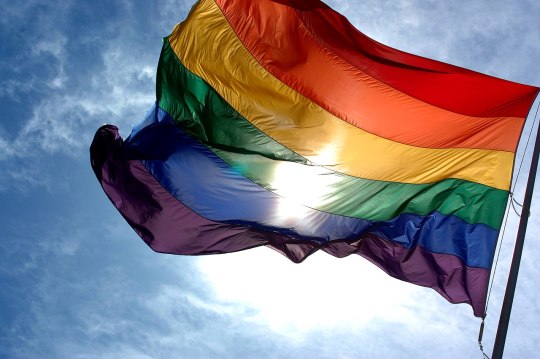
A Supreme Court ruling this June barring workplace discrimination marked another milestone in the progress of lesbian, gay, bisexual, transgender and queer (LGBTQ) people in the United States. From Executive Orders to local ordinances, laws related to the legal protections and equitable treatment of LGBTQ Americans have seen many changes since the 1950s. Progress, although ultimately significant in many aspects, has been gradual and complicated, with both advances and reversals. With this month marking Pride Month, here is a look at the milestones in this movement.
1953- Executive Order 10450
On April 27, 1953 President Dwight Eisenhower signed Executive Order 10450. This order prohibited homosexual people from working in the federal government or any private contractors of the federal government. The rationale behind this order was that homosexual people would be security risks (PBS). Homosexuality at the time was considered to be a sexual perversion, and therefore homosexuals were included as a “sexual perversion” mentioned in section 8aiii of the order.


1958- US Supreme Court Case SuOne, Inc. v. Olesen
January 13, 1958 was the first time the United States Supreme Court ruled in favor of homosexuals, protecting their First Amendment constitutional right (PBS). The Supreme Court reversed the lower court decision that the gay magazine One: The Homosexual Magazine by Mattachine Society was obscene (NY Times).
1961- First State Decriminalization of Homosexuality
On July 28 of 1961, Illinois became the first state to end its anti-sodomy law, essentially decriminalizing homosexuality.
1971 & 1972- Minnesota Supreme Court and US Supreme Court, Baker v. Nelson
Two men, Jack Baker and Michael McConnell, requested the United States Supreme Court pronounce that Minnesota’s failure to allow them to marry was a violation of the Constitution (NY Times). The court dismissed the appeal for “want of a substantial federal question” and no oral arguments were held (Constitutional Law Reporter). This was impactful because opponents of same-sex marriage used this ruling to support their future arguments.
1973- Kentucky Court of Appeals, Jones v. Hallahan
Marjorie Jones and Tracy Knight, both women, sued for a marriage license when they were denied by a county clerk. The court ruled against them, concluding that the term marriage was already defined as a union between a man and a woman, and therefore two women were not eligible to enter into a marriage (LexisNexis).
1977- NY County Supreme Court, Richards v. US Tennis Association
A transgender woman,Renee Richards,was a tennis player who wanted to play in the United States Open but was denied entrance in 1976 based on her gender identity. She won an injunction under New York law and subsequently participated in the 1977 US Open (NY Times).
1982- First State to Outlaw Discrimination based on Sexual Orientation
In 1982, Wisconsin outlawed discrimination based on sexual orientation.
1986- US Supreme Court, Bowers v. Hardwick
As the AIDS crisis surged, anti-gay rhetoric and hysteria grew. When a police officer exercising a warrant on an unrelated matter caught Michael Hardwick having sex with another man, he arrested him for not complying with the anti-sodomy statute at the time. On June 30, 1986, the United States Supreme Court ruled that Georgia State’s criminal sodomy law was constitutional (Encyclopedia Brittanica).
1993- “Don’t Ask, Don’t Tell”
On December 21, 1993, the Department of Defense issued a directive that forbid the US Military from excluding applicants from service based on their sexual orientation (PBS). Although homosexual acts or declaration that one was homosexual were still forbidden, applicants were no longer required to reveal their sexuality.
1996- Defense of Marriage Act
September 21, 1996, President Clinton signed the Defense of Marriage Act, defining marriage as a legal union only between a man and woman, and hence not requiring any state to recognize same-sex marriage from out of state (PBS).
1998- Executive Order 13087
President Clinton signed Executive Order 13087on May 28,1998, amending Executive Order 13087 to “provide for a uniform policy for the Federal Government to prohibit discrimination based on sexual orientation” (GovInfo).
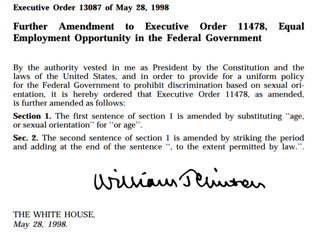
2000- First State to Legalize Civil Unions/Registered Partnerships
On April 26, Vermont legalized civil unions and registered partnerships for same sex couples.
2004- First State to Legalize Gay Marriage
May 18, 2004, Massachusetts court found denying same-sex couples’ marriage to be unconstitutional.
2008- Proposition 8 in California
In November of 2008, California voters approved proposition 8, which made same-sex marriages in the state of California illegal (PBS).
2009- Matthew Shepard Act
On October 28, President Obama signed into law the Matthew Shepard Act, which expanded 1969 US Federal Hate Crime Law to incorporatecrimes driven by a victim’s actual or perceived gender, sexual orientation, gender identity or disability (PBS).
2010- Repeal of “Don’t Ask, Don’t Tell”
On December 18, 2010, Clinton’s “Don’t Ask, Don’t Tell” policy is repealed by the US Senate, meaning homosexuals can serve openly in the military.
2015- US Supreme Court, Obergefell v. Hodges
On June 26, 2015, the United States Supreme Court declared same-sex marriage legal in all states.
2018- US Supreme Court, Masterpiece Cakeshop v. Colorado Civil Rights Commission
The Supreme Court ruled that “showing hostility to religious people in applying nondiscrimination laws violated the First Amendment’s free exercise clause” (NY Times). However, specifics and guidelines around if and when religious people can refuse service to same-sex couples was left ambiguous.
2019- US Court of Appeals for the District of Colombia Circuit, US Supreme Court, Doe v. Trump
In July of 2017, President Trump posted a Tweet proposing to ban transgender people from US military service (FreedomForAllAmericans). The military ban began officially on April 12, 2019 and court ligation against it continues.
2020- Elimination of nondiscrimination healthcare for LGBTQ people
On July 12, 2020 President Trump finalized his new rule that eradicates nondiscrimination protections for LGBTQ people’s healthcare and health insurance (NPR). This rule pertains to the nondiscrimination protections that were laid out in Section 1557 of the Affordable Care Act, a federal law that made it illegal to discriminate based on race, color, nationality, sex, age or disability. Under Obama in 2016, “sex” included all gender identities (NPR). Lindsey Dawson, associate director of HIV policy at the Kaiser Family Foundation explains that “under the new rule, a transgender person could, for example, be refused care for a checkup at a doctor’s office” (NPR, Lindsey Dawson).
2020- US Supreme Court, Bostock v. Clayton County, Ga. and Altitude Express Inc. v. Zarda
By a 6 to 3 vote, the court held that the Civil Rights Act of 1964 protects gay and transgender employees from workplace discrimination. The 1964 legislation’s “because of sex” clause was found to apply to LGBTQ workers, expanding the act’s impact to a new class of employee. The court ruling was prompted by two cases. One was brought by two gay men who were fired because of sexual orientation, the other by a transgender woman for embracing her gender identity at work. The ruling sided with plaintiff’s argument that the 1964 legislation, while not specifically mentioning LGBTQ people, afforded protections from termination of employment that were not based on job performance (NY Times).
In addition to the milestones noted above, laws related to the rights of LGBTQ people continue to be shaped at the local and state level. It is likely, in a divided political climate, that further progress and controversy will continue to be a legal focus with both advocates and opponents seeking further changes across a wide spectrum including family law, workplace discrimination and other key civil rights arenas.
_______________________________________________________________
https://www.pbs.org/wgbh/americanexperience/features/stonewall-milestones-american-gay-rights-movement/
https://www.cia.gov/library/readingroom/docs/CIA-RDP87B01034R000100030071-4.pdf
https://www.nytimes.com/2019/06/19/us/legal-history-lgbtq-rights-timeline.html
https://constitutionallawreporter.com/2012/12/20/baker-v-nelson-the-often-forgotten-supreme-court-same-sex-marriage-case/
https://www.lexisnexis.com/community/casebrief/p/casebrief-jones-v-hallahan#:~:text=Facts%3A,license%20to%20marry%20each%20other.
https://www.britannica.com/event/Bowers-v-Hardwick
https://www.freedomforallamericans.org/doe-v-trump/
https://www.govinfo.gov/content/pkg/FR-1998-06-02/pdf/98-14689.pdf
https://www.npr.org/sections/health-shots/2020/06/12/868073068/transgender-health-protections-reversed-by-trump-administration
https://www.nytimes.com/2020/06/15/us/gay-transgender-workers-supreme-court.html
Photo Credit: Ludovic Bertron
2 notes
·
View notes
Link
On the first weekend of November 2019, the annual National Students for Justice in Palestine (SJP) conference took place at the University of Minnesota. As previously reported by Canary Mission, the annual SJP conference is notorious for its anti-Semitism, incitement and support for terror.
To avoid exposure by Canary Mission, the National SJP organizers hid the conference’s programming and attendees from the public.
In the weeks directly following the conference, SJP chapters across the country launched a barrage of intimidation attacks against Jewish and pro-Israel students.
SJP is anti-Semitic. The National SJP conference leads to increased hatred and harassment against Jews on campus.
November 1-3:
The National SJP Conference 2019 took place at University of Minnesota.
November 2, 2019
SJP Benedictine defended a SJP Benedictine student who grilled a Holocaust survivor, so as to make it “relevant to SJP.”
November 13:
SJP at Arizona State University (ASU) and other student organizations (No Más Muertes, MEChA de ASU, Young Democratic Socialists of America at ASU, Students for Socialism) - Disrupted and tried to shout down a Chabad ASU event. One protestor held a sign that said “Long Live the Intifada.”
Harvard Palestine Solidarity Committee (PSC) claimed partial credit for a Harvard Law School student walkout from an event hosting the Israeli ambassador to the US, discussing the legitimacy of Israeli settlements in the occupied territories.
November 14:
SJP Vermont University tweeted a series of hateful and anti-Zionist comments on Twitter
SJP Vassar disrupted a Vassar Organization Israel Conversations Effectively (VOICE) event, titled “The Indigenous Jews of the Middle East: Forgotten Refugees,” hosting Hen Mazzig. 25-30 demonstrators chanted “From the River to the Sea, Palestine will be Free” and prevented the lecture from happening for 20 minutes.
November 15:
Various New York SJP Chapters along with Within Our Lifetime (WOL) held an anti-Israel protest in Times Square. SJP leader, Husam Kaid, called for “an Intifada [violent uprising] in every college campus” at an anti-Israel rally in Times Square.
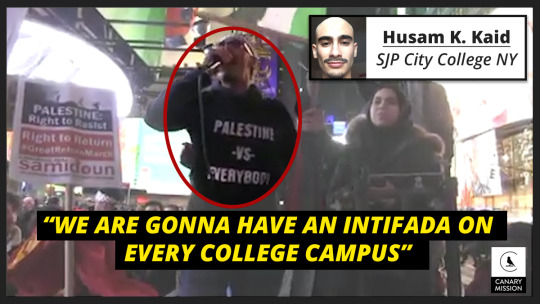
November 17:
Florida State University SJP held an anti-Israel protest at the California State Capitol honoring Palestinian Islamic Jihad terrorists. Demonstrators chanted [00:00:47] “From the River to the Sea, Palestine will be Free!”
November 20:
SJP Butler along with the Party for Socialism and Liberation held a protest for Gaza in memory of Palestinian Islamic Jihad terrorists. One protestor was photographed waving the flag of a U.S. designated terror group, Popular Front for the Liberation of Palestine (PFLP).
SJP at the University of South Florida held a protest and march through the USF campus mopurning “fallen” Palestinian Islamic Jihad terrorists. During the march, demonstrators chanted “Israel is an apartheid state.”
SJP UC Santa Barbara held a “Vigil for Gaza” and die-in, at the Arbor in front of the Davidson Library, in honor of the victims who lost their lives this past week. Demonstrators chanted “Long live the Intifada [violent uprising]” and “From the River to the Sea, Palestine will be Free.”
Students Against Israeli Apartheid (SAIA) at York held a violent protest against a school-sanctioned event, hosted by Herut Canada, featuring IDF reservists. Demontrators chanted “Viva Viva, Intifada [violent uprising]” and violently assaulted pro-Israel attendees.
SJP University of Florida (UF) organized a walkout of 100 students from a UF event hosting an IDF officer and then held a vigil honoring Palestinian Islamic Jihad terrorists.
SJP Chicago and 7 other Chicago-based SJP chapters held a "Die-in" in downtown Chicago honoring Palestinian Islamic Jihad (PIJ) terrorists. During the protest, two demonstrators held an Israeli flag covered in fake blood, with the word “genocide.”
November 21:
SJP at UC Berkeley and Bears For Palestine had an anti-Israel protest on Berkley campus, and reportedly held a moment of silence for Palestinian Islamic Jihad terrorists. SJP demonstrators also echoed Yasser Arafat’s rallying cry for the murder of Israeli Jews, chanting “With our blood and souls, we will redeem you Palestine.”
SJP Oberlin College Erected a memorial to Palestinian Islamic Jihad terrorists on the “Wilder Bowl,” a large grassy open area at the heart of Oberlin campus.
SJP Loyola held a vigil honoring Palestinian Islamic Jihad terrorists at the East Quad on Loyola campus.
November 29:
York Federation of Students passed a motion stating that it will actively work to oppose “representatives of the Israeli state” who appear on campus.
youtube
8 notes
·
View notes
Text
I AM WOMAN!!!
For my second blog I decided to write about gender inequality and gender roles and how hard it is to be a working mother. I had my last child December 15,2018. I went back to work May 2019. I am a certified nursing assistant who works the night shift. A typical shift for me is from seven pm to seven thirty am. At the time I was breast feeding and pumping so my husband could feed our child while at work. Well this was his first child so he needed help so like any man would do he decided to get help from his mother. Who was born in the 1940s, so she is used to women staying home with the kids while the man works? So, she told him that I was a bad mother abandoning my newborn to work when I should just let him work. She also told him that I was trying to be the head of the household instead of letting him lead. (We are also Christians in our religion it is known that the man is the head of the household. He leads and the wife is supposed to follow). I politely let her know that this is 2019 in California, to survive you need two incomes. I am a good mother to my children. Just because I work to help my husband provide for my family does not mean that I am a bad mother. I am his help meet not help struggle and possibly get evicted. But since that conversation with his mom it has now been conflict because of me wanting to work when now he thinks I should stay home and take care of the kids.

I have attached a picture of my beautiful family.
According to feminist theory they believe that “women and men should have equal opportunities in economic, political, and social life”. I agree with them times have changed. There are countless opportunities for men and women so why can’t women work? Why is it 2020 and there is a problem with a mother working to provide for her children? My motto is simple “Hard work pays off”. I am the role model for my children especially my girls. If they see mommy not going to work and just cleaning up the house, they will be conditioned to think that is the norm. When that is not the norm. I want them to work hard so they know that they can have whatever they want if they work for it.

I have attached a picture of women from different races and ethnicities empowering one another.
“Traditional gender-role attitudes are closely linked to ideals about motherhood. Motherhood is presumed to be a primary identity for most adult women, and womanhood and motherhood are often treated as synonymous identities (for an overview, see Arendell, 2000). Moreover, the discourse about motherhood is often characterized by ideals labelled as intensive mothering (Liss et al., 2013). Intensive mothering posits that mothers accomplish parenting best because they possess an inherent skill in parenting. Fathers are typically considered as well intentioned, but less competent in parenting. Furthermore, intensive mothering defines motherhood as exclusive and wholly child-centered and portrays the good mother as being totally devoted to the care 3 VC 2018 International Association of Applied Psychology. 252 STEINER, KRINGS AND WIESE of her children, self-sacrificing, and with having no selfish needs” (Steiner, R. S., Krings, F., & Wiese, B. S. 2018) The problem is most elderly people are set in their ways. This is the case for my mother in law, hence why she feels it’s a huge problem with me working.
“The family-devotion schema assigns women, not men, the primary responsibility of childrearing and housework and holds them accountable. Women are to find fulfillment in the intimacy of ‘‘intensive motherhood’’—a child-centered, emotionally absorbing, and labor-intensive form of parenting (Hays, 1996)—and their devotion to family is expected to override all other commitments (Roth, 2006; Turco, 2010). Failure to do so may bring the sanction of being considered a bad mother (Blair-Loy, 2003).” I have attached evidence that shows that the gender role of being a mother falls upon the mother. The ironic thing about that is it takes two to make a baby. A father can make a baby but can’t help nurturing the baby is absolutely ridiculous. It is not right that we must be stressed thinking we aren’t good mothers when all we want to do is show our children that they can achieve their dreams.
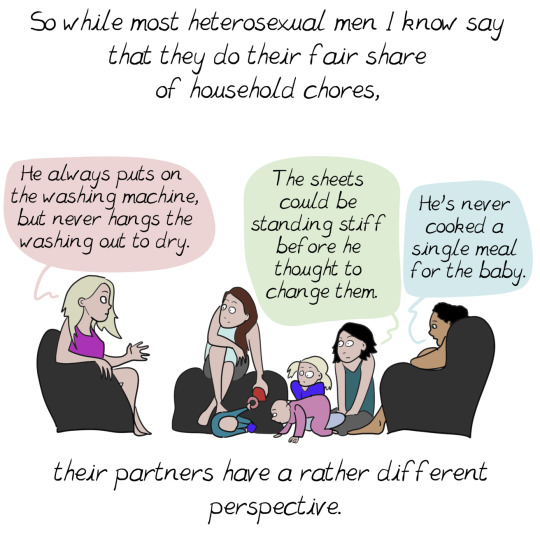
I have attached a picture illustrating how mothers feel.
I have attached a video on gender role stereoptypes and a feminist test
https://youtu.be/Ulh0DnFUGsk
https://www.allthetests.com/quiz31/quiz/1413293600/Are-you-a-feminist
References:
Padavic, I., Ely, R. J., & Reid, E. M. (2019). Explaining the Persistence of Gender Inequality: The Work–family Narrative as a Social Defense against the 24/7 Work Culture. Administrative Science Quarterly, 65(1), 61–111. doi: 10.1177/0001839219832310
Steiner, R. S., Krings, F., & Wiese, B. S. (2018). Remember the Children, Honey! Spouses Gender-Role Attitudes and Working Mothers Work-to-Family Conflict. Applied Psychology, 68(2), 250–275. doi: 10.1111/apps.12160
University of Minnesota Libraries Publishing. (2015). Social problems: continuity and change. Minneapolis, MN.
Steiner, R. S., Krings, F., & Wiese, B. S. (2018). Remember the Children, Honey! Spouses Gender-Role Attitudes and Working Mothers Work-to-Family Conflict. Applied Psychology, 68(2), 250–275. doi: 10.1111/apps.12160
1 note
·
View note
Photo




Governor Luther Youngdahl
Born in Minneapolis on May 29, 1896, Luther Youngdahl rose through the local ranks in Hennepin County, eventually becoming governor and a federal judge. Today would have been his 124th birthday.
One of 10 children of Swedish immigrants John C. and Elizabeth Youngdahl, young Luther grew up on the south side of Minneapolis. John Youngdahl was a grocer, and the family normally lived near his store. When Luther graduated from South High School in 1915, the family was living above the store on Lyndale Avenue.
Youngdahl began his college studies at the University of Minnesota and Gustavus Adolphus College before his education was interrupted by World War I. He served in the war, and his name even appears in the South High School honor roll. After the war, the future governor received his law degree and began working with the Minneapolis city attorney’s office and local law practices. Youngdahl was soon raised to the bench and served as a judge for the city of Minneapolis and Hennepin County. In 1942, he was elected to the Minnesota Supreme Court, and in 1946 he was elected governor of Minnesota.
As governor, Youngdahl championed reforms in the state’s mental hospitals and improved educational opportunities for students statewide. Youngdahl’s opponents maligned the moralism of his administration and called him the “Sunday School Governor.” Not shying away from this view of his policies, Youngdahl famously oversaw the outlawing of slot machines in Minnesota during his first term.
In 1951, while Youngdahl was still governor, President Truman appointed him to the United State District Court for the District of Columbia. Resigning as governor, Youngdahl moved to DC and continued to hear cases into his eighties. Luther Youngdahl died in 1978 and is buried in Arlington National Cemetery.
Photos and yearbook from the Hennepin County Library Digital Collections.
20 notes
·
View notes